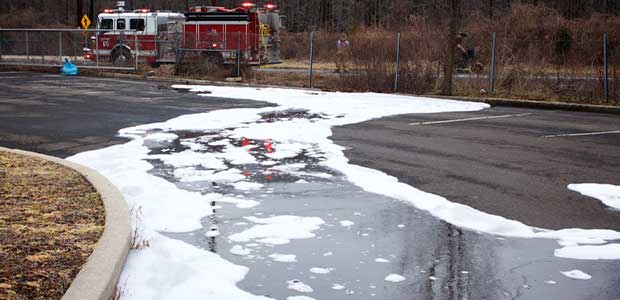
A Year in Review: EPA’s Work on PFAS
One year after the PFAS Strategic Roadmap was announced, the EPA is looking back at the progress it’s made.
- By Alex Saurman
- Nov 18, 2022
It’s been one year since the EPA announced its plan on steps it will take to protect people from per and polyfluoroalkyl substances, also known as PFAS.
What has the agency accomplished in this time? The EPA’s A Year of Progress Under EPA’s PFAS Strategic Roadmap, published this week, outlines what actions have been taken so far to better the lives of people in our communities. According to a news release, the agency has accomplished the following:
Proposed re-classification of two PFAS. In late August, the agency moved to classify two PFAS—perfluorooctanoic acid (PFOA) and perfluorooctanesulfonic acid (PFOS)—as “hazardous substances.” PFOA can be found in multiple products, including some household items—with one study finding PFOA in items from Swedish stores—and PFOS can be found in “surfactant in fire-fighting foams, alkaline cleaners, floor polishes” and more, per the National Library of Medicine.
Took action on PFAS and drinking water. Last year, the Fifth Unregulated Contaminant Monitoring Rule paved the way for data collection and monitoring of 29 PFAS. Drinking water health advisories were also released in June for four PFAS: PFOA, PFOS, perfluorobutane sulfonic acid and its potassium salt (PFBS) and hexafluoropropylene oxide (HFPO) dimer acid and its ammonium salt. The agency also doled out $10 billion to “address emerging contaminants,” according to the news release.
Launched Testing Order for PFAS. The first testing order for PFAS was launched in June. Four companies will test 6:2 fluorotelomer sulfonamide betaine, a PFAS found in firefighting foam, over 400 days.
Made advancements in science. According to a news release, “[t]he [a]gency issued more than 30 scientific publications by EPA researchers and released EPA’s PFAS Thermal Treatment Database” as well as incorporated updates into “EPA’s cross-agency PFAS efforts,” like “updating EPA’s contaminated site cleanup tables” and “developing new PFAS methods and conducting toxicity assessments."
Worked with the community. The EPA held community engagement sessions, like webinars and “stakeholder meetings,” and plans to host region-specific events in 2023.
PFAS can be found in a multitude of products and can end up in the environment, humans and animals. The effects of exposure are not fully known, but research is being conducted.
“EPA continues to deliver on its promise to confront PFAS and protect the health of people and communities across the nation,” said Radhika Fox, Assistant Administrator for Water and Co-Chair of EPA’s Council on PFAS in the news release.
“[The] progress report highlights how much we have accomplished in the first year of implementing the PFAS Roadmap. The report also signals important actions the agency will take in the year to come, including our work to invest $10 billion from President Biden’s Bipartisan Infrastructure Law in solutions to protect communities from emerging contaminants like PFAS,” Fox continued.
Photo credit: Jana Shea / Shutterstock.com
About the Author
Alex Saurman is the Content Editor for Environmental Protection.